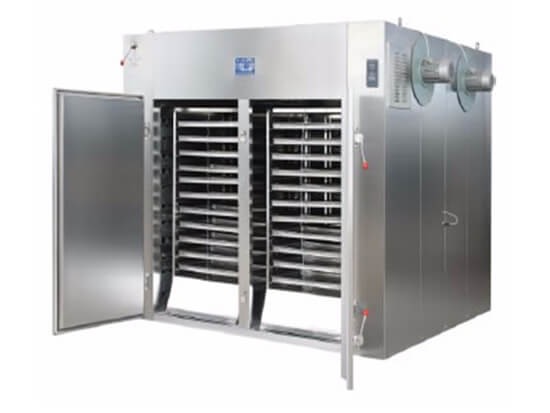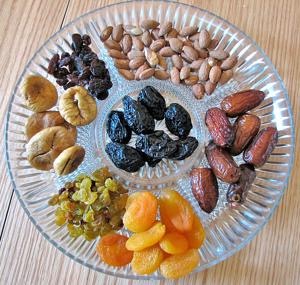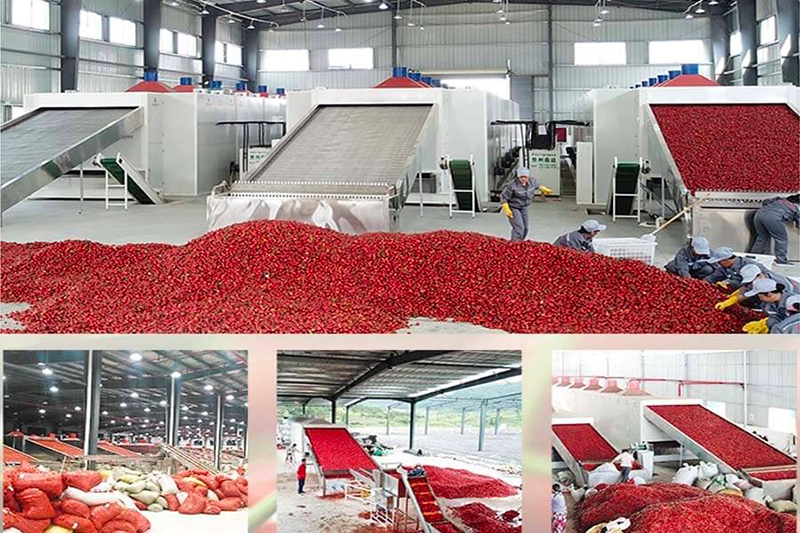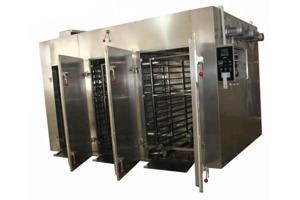
Content Menu
● Introduction
● What Is a Food Dehydrator?
>> How Does a Food Dehydrator Work?
>> Components of a Food Dehydrator
● Ideal Temperatures for Food Dehydration
>> Why Temperature Matters
● How Hot Does a Heat Pump Dryer Get?
>> Comparing Heat Pump Dryers and Food Dehydrators
● Benefits of Using Food Dehydrators
>> Environmental Benefits
● Common Foods Suitable for Dehydration
>> Preparing Foods for Dehydration
● How Long Does It Take to Dehydrate Food?
>> Example Drying Times
>> Monitoring Progress
● Storing Dried Foods
● Recipes Using Dried Foods
● Conclusion
● Frequently Asked Questions
>> 1. What is the best temperature for drying fruits?
>> 2. Can I use a heat pump dryer for dehydrating food?
>> 3. How do I know when my food is fully dehydrated?
>> 4. Is it necessary to pre-treat fruits before dehydration?
>> 5. How should I store my dehydrated foods?
Introduction
Food dehydration is a method of preserving food by removing moisture, which inhibits the growth of bacteria, yeast, and mold. As a leading manufacturer of food dehydrators in China, we provide OEM services to international brands, wholesalers, and manufacturers. In this article, we will explore the ideal temperatures for food dehydrators, how they compare to heat pump dryers, and the benefits of using these machines for food preservation.

What Is a Food Dehydrator?
A food dehydrator is an appliance designed to remove moisture from food items. By using controlled heat and airflow, it effectively dries fruits, vegetables, meats, and herbs while retaining their flavor, color, and nutritional value.
How Does a Food Dehydrator Work?
Food dehydrators work by circulating warm air around the food placed on trays. The heat causes moisture to evaporate, while the airflow helps to carry the moisture away from the food. This process can take several hours depending on the type of food being dried.
Components of a Food Dehydrator
- Heating Element: Provides consistent heat to evaporate moisture.
- Fan: Ensures even distribution of hot air throughout the drying chamber.
- Trays: Removable racks where food is placed for drying.
- Thermostat: Regulates temperature settings for different types of food.
Ideal Temperatures for Food Dehydration
The ideal temperature for dehydrating food varies depending on the type of food being processed. Here are some general guidelines:
- Fruits: 50°C to 70°C (122°F to 158°F)
- Vegetables: 60°C to 70°C (140°F to 158°F)
- Meats (Jerky): 70°C to 75°C (158°F to 167°F)
- Herbs: 35°C to 45°C (95°F to 113°F)
These temperatures ensure that the food is dried effectively while minimizing nutrient loss.
Why Temperature Matters
Maintaining the right temperature is crucial for successful dehydration. Too high a temperature can cook the food instead of drying it, leading to undesirable textures and flavors. Conversely, too low a temperature may not effectively remove moisture, resulting in spoilage.

How Hot Does a Heat Pump Dryer Get?
While heat pump dryers are primarily used for laundry, they operate at significantly different temperatures compared to food dehydrators. Heat pump dryers typically reach temperatures between 50°C and 65°C (122°F and 149°F). This range is suitable for drying clothes but may not be optimal for all types of food dehydration.
Comparing Heat Pump Dryers and Food Dehydrators
| Feature | Heat Pump Dryer | Food Dehydrator |
|-----------------------------|-----------------------------|----------------------------|
| Temperature Range | 50°C - 65°C | 35°C - 75°C |
| Primary Use | Laundry drying | Food preservation |
| Moisture Removal Method | Air circulation | Controlled heat & airflow |
| Nutrient Preservation | Not applicable | High |
Benefits of Using Food Dehydrators
Using a food dehydrator offers several advantages:
- Nutritional Retention: Dehydration preserves vitamins and minerals in fruits and vegetables.
- Long Shelf Life: Dried foods can last for months or even years when stored properly.
- Flavor Concentration: Removing water intensifies the natural flavors of foods.
- Cost Efficiency: Making your own dried snacks at home can save money compared to store-bought options.
- Healthy Snacking: Dried fruits and vegetables make for nutritious snacks without added preservatives or sugars.
Environmental Benefits
In addition to personal health benefits, using a food dehydrator can also have positive environmental impacts. By preserving seasonal produce through dehydration, you can reduce waste and minimize your carbon footprint associated with transporting fresh produce long distances.
Common Foods Suitable for Dehydration
Some popular foods that can be effectively dehydrated include:
- Fruits: Apples, bananas, strawberries, mangoes
- Vegetables: Carrots, bell peppers, tomatoes
- Meats: Beef (for jerky), chicken
- Herbs: Basil, oregano, thyme
Preparing Foods for Dehydration
Proper preparation is key to successful dehydration. Here are some tips:
1. Wash Thoroughly: Clean all fruits and vegetables under running water to remove pesticides or dirt.
2. Peeling and Cutting: Depending on personal preference or recipe requirements, peel fruits or vegetables as needed. Cut them into uniform sizes for even drying.
3. Pre-treatment Options:
- Fruits: Soaking in lemon juice or ascorbic acid solution helps prevent browning.
- Vegetables: Blanching can help preserve color and texture.
How Long Does It Take to Dehydrate Food?
The time required for dehydration varies based on several factors:
- Type of food
- Thickness of slices
- Humidity levels in the environment
- Temperature settings of the dehydrator
Generally, drying times can range from a few hours to over a day.
Example Drying Times
| Food Item | Approximate Drying Time |
|----------------|--------------------------|
| Apples | 6 - 12 hours |
| Bananas | 8 - 12 hours |
| Tomatoes | 6 - 12 hours |
| Carrots | 8 - 10 hours |
Monitoring Progress
It's important to check on your food periodically during the dehydration process. This will help you gauge progress and make adjustments if necessary.
Storing Dried Foods
Once your foods are fully dehydrated, proper storage is essential to maintain their quality:
1. Cooling Down: Allow dried foods to cool completely before packaging them.
2. Airtight Containers: Store in glass jars or vacuum-sealed bags to minimize exposure to air and moisture.
3. Cool Dark Place: Keep your dried foods in a cool, dark area away from direct sunlight.
4. Labeling: Always label containers with the contents and date of dehydration for easy reference.
Recipes Using Dried Foods
Dried foods can be incorporated into various recipes:
- Trail Mix: Combine dried fruits with nuts and seeds for a healthy snack.
- Soups and Stews: Add dried vegetables directly into soups; they will rehydrate during cooking.
- Granola Bars: Use dried fruits in homemade granola bars for added sweetness.
- Smoothies: Blend dried fruits with yogurt or milk; soak them beforehand for better texture.
Conclusion
Food dehydrators are an excellent investment for those looking to preserve their favorite foods while maintaining their nutritional value. Understanding the ideal temperatures for different types of foods is crucial in achieving optimal results. While heat pump dryers serve a different purpose—primarily laundry drying—knowing how hot they get can help users understand their limitations when it comes to food preservation.
By utilizing a high-quality food dehydrator, you can enjoy delicious snacks year-round while saving money and reducing waste. With proper preparation and storage techniques, you'll be able to create healthy snacks that are not only tasty but also packed with nutrients.

Frequently Asked Questions
1. What is the best temperature for drying fruits?
The best temperature range for drying fruits is between 50°C and 70°C (122°F to 158°F).
2. Can I use a heat pump dryer for dehydrating food?
While you can use a heat pump dryer, it may not provide optimal results as it operates at higher temperatures than recommended for some foods.
3. How do I know when my food is fully dehydrated?
Food should be leathery or crisp when fully dried; there should be no visible moisture or stickiness.
4. Is it necessary to pre-treat fruits before dehydration?
Pre-treating fruits can help preserve color and flavor but is not always necessary; it depends on personal preference.
5. How should I store my dehydrated foods?
Store dehydrated foods in airtight containers in a cool, dark place to maximize shelf life.
By understanding these aspects of food dehydration and how they relate to heat pump dryers, you can make informed decisions about your home food preservation practices. Whether you're looking to create healthy snacks or preserve seasonal produce, investing in a quality food dehydrator will enhance your culinary adventures while promoting sustainability in your kitchen practices.












